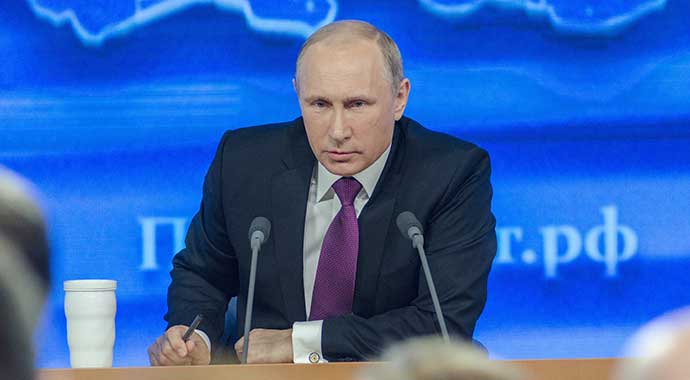Rodric Braithwaite’s book, Russia Myths and Realities, a perfect segue into Putin’s brain
 Prior to the February invasion of Ukraine, my knowledge of Russian history pretty much started with the early 19th century. Everything before that was vague and fragmentary, enlivened only by titillating tales of Catherine the Great’s purported sexual appetite.
Prior to the February invasion of Ukraine, my knowledge of Russian history pretty much started with the early 19th century. Everything before that was vague and fragmentary, enlivened only by titillating tales of Catherine the Great’s purported sexual appetite.
But there’s much more to the Russian story. And if you’re seeking to catch up, Rodric Braithwaite’s succinct Russia Myths and Realities isn’t a bad place to start.
Braithwaite begins by noting the role of selective memory and imagination. It’s not just the Russians who do it.
To quote his opening paragraph: “Everyone has a national narrative, constructed from fact, fact misremembered and myth. People tell themselves stories about their past to give some meaning to the confusions of their present. They rewrite their stories from generation to generation to adapt them to new realities. They omit, forget or wholly reinvent episodes that are uncomfortable or disgraceful.”
 |
| Related Stories |
| Historian reveals story of Canadian journalist who chronicled Holodomor
|
| Understanding Putin’s long view of an expanded Russia
|
| Was the Ukrainian Red Famine genocide or incompetence?
|
Before the 1917 Bolshevik Revolution, Russia had experienced two important dynasties – the Ryuriks, who ruled for almost 800 years, and their Romanov successors. The territorial scope waxed and waned, at times including not just ethnic Russians but also Poles, Balts, Ukrainians, Tartars and various others.
Among the Romanovs (1613-1918), two particular names stand out – Peter the Great and Catherine the Great. Both grappled with the challenges of asserting Russia’s place as a major European player while simultaneously modernizing a relatively backward society.
Born in 1672, Peter came to power in the mid-1690s. Braithwaite describes him as “a giant in every respect: six foot seven inches tall, a man of demonic energy, wilful and overbearing, crude and often drunk … brutal and sometimes terribly cruel … capable of dominating every setting and every situation.” In an age of empire, he transformed Russia into a broadly respected imperial power.
One of Peter’s first endeavours was an extended exploratory visit to Western Europe. The objective was to get a first-hand sense of technology, industry and methods of government. He was looking for ideas and practices that could be profitably imported.
Returning home, he insisted on European dress and social customs at court, moved the capital from Moscow to St. Petersburg (which he built), and set about reorganizing the machinery of government along European lines. Industrialization got a boost with foreigners brought in to impart relevant know-how. And there was the matter of clipping the power of the Church and expropriating much of its wealth, a process that Catherine subsequently concluded.
While all this was going on, Peter had a spectacular military success against the previously dominant Swedish Empire. In July 1709, at Poltava (in southern Ukraine), he personally commanded an army that routed the hitherto invincible Swedes. When the war eventually ended, Russia was firmly ensconced on the Baltic.
Catherine was an interloper, born Prussian in what is now Poland. She married into the ruling Russian dynasty at the age of 16 but detested her husband and claimed the marriage was never consummated. Then, a mere six months after he succeeded to the throne in 1762, she connived in his overthrow and embarked on a 34-year reign as ruling empress. It helped that her current lover was one of the coup plotters.
Braithwaite considers Catherine among “the most intelligent of Russia’s rulers, a consummate politician and an energetic and capable administrator.” Although she assiduously cultivated advisers, there was no question of who was boss.
Like Peter, Catherine was keen on modernizing and Europeanizing Russia. But while she was ruthless in protecting her power, she wasn’t into gratuitous cruelty. That, however, shouldn’t be confused with any latent inclination towards democracy. “The Sovereign,” she wrote, “is absolute.”
In keeping with the times, Catherine’s foreign policy was expansionist.
Crimea and the Black Sea coast were won from the Ottoman Empire, and new towns like Odesa and Sevastopol were founded; Russian control over most of Ukraine was solidified; in conjunction with Prussia and Austria, the Polish-Lithuanian Commonwealth was carved-up, thus turning places like Warsaw (Poland), Vilnius (Lithuania) and Minsk (Belarus) into Russian imperial cities.
It was an example of how erstwhile winners can become losers. “The Poles,” Braithwaite notes, “had not always been the victims. Poland was a European Great Power until the end of the 17th century, as predatory as the rest of them.”
So that’s the history Vladimir Putin relates to. And Peter the Great is one of his heroes.
Pat Murphy casts a history buff’s eye at the goings-on in our world. Never cynical – well, perhaps a little bit.
For interview requests, click here.
The opinions expressed by our columnists and contributors are theirs alone and do not inherently or expressly reflect the views of our publication.
© Troy Media
Troy Media is an editorial content provider to media outlets and its own hosted community news outlets across Canada.

